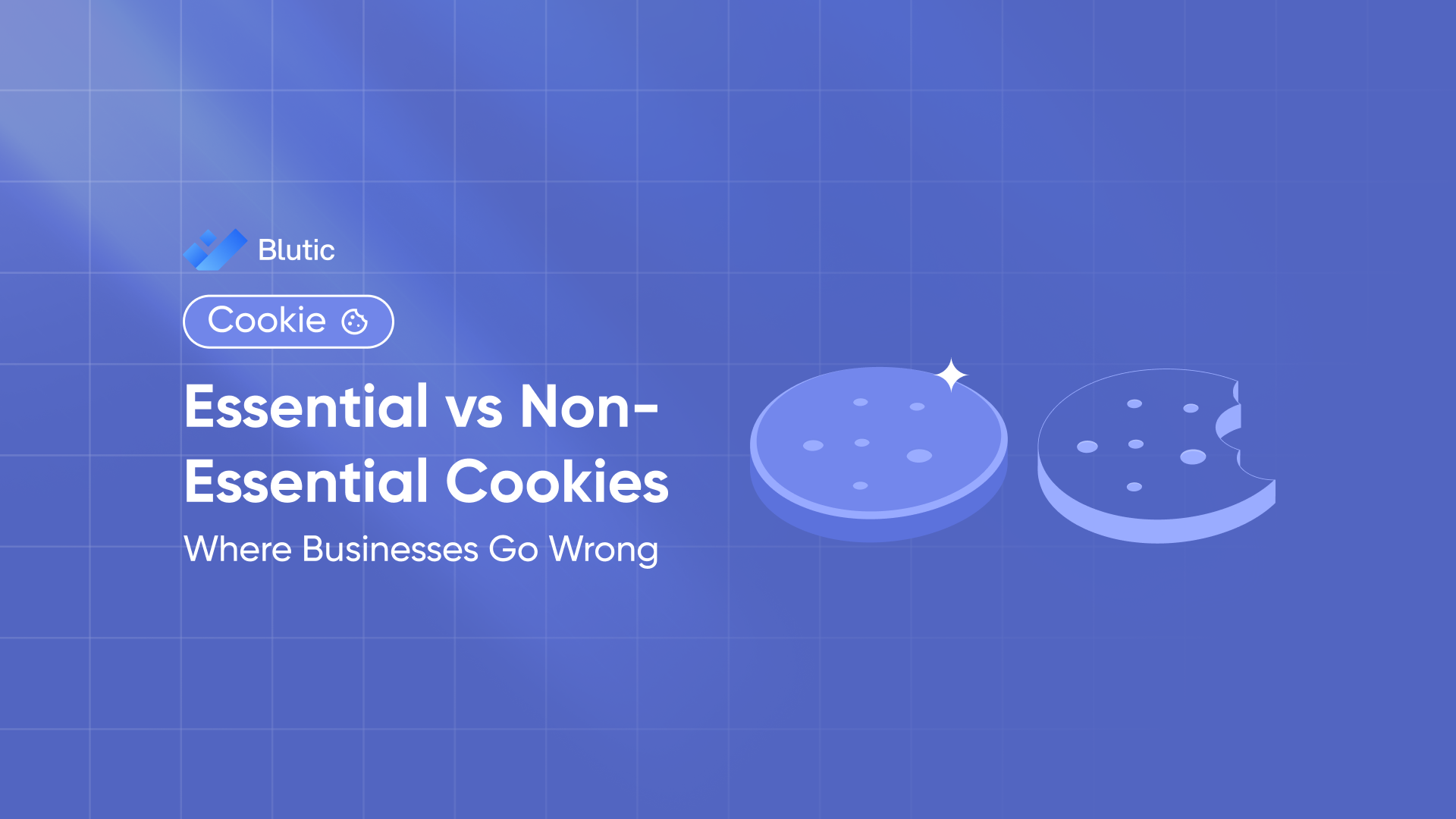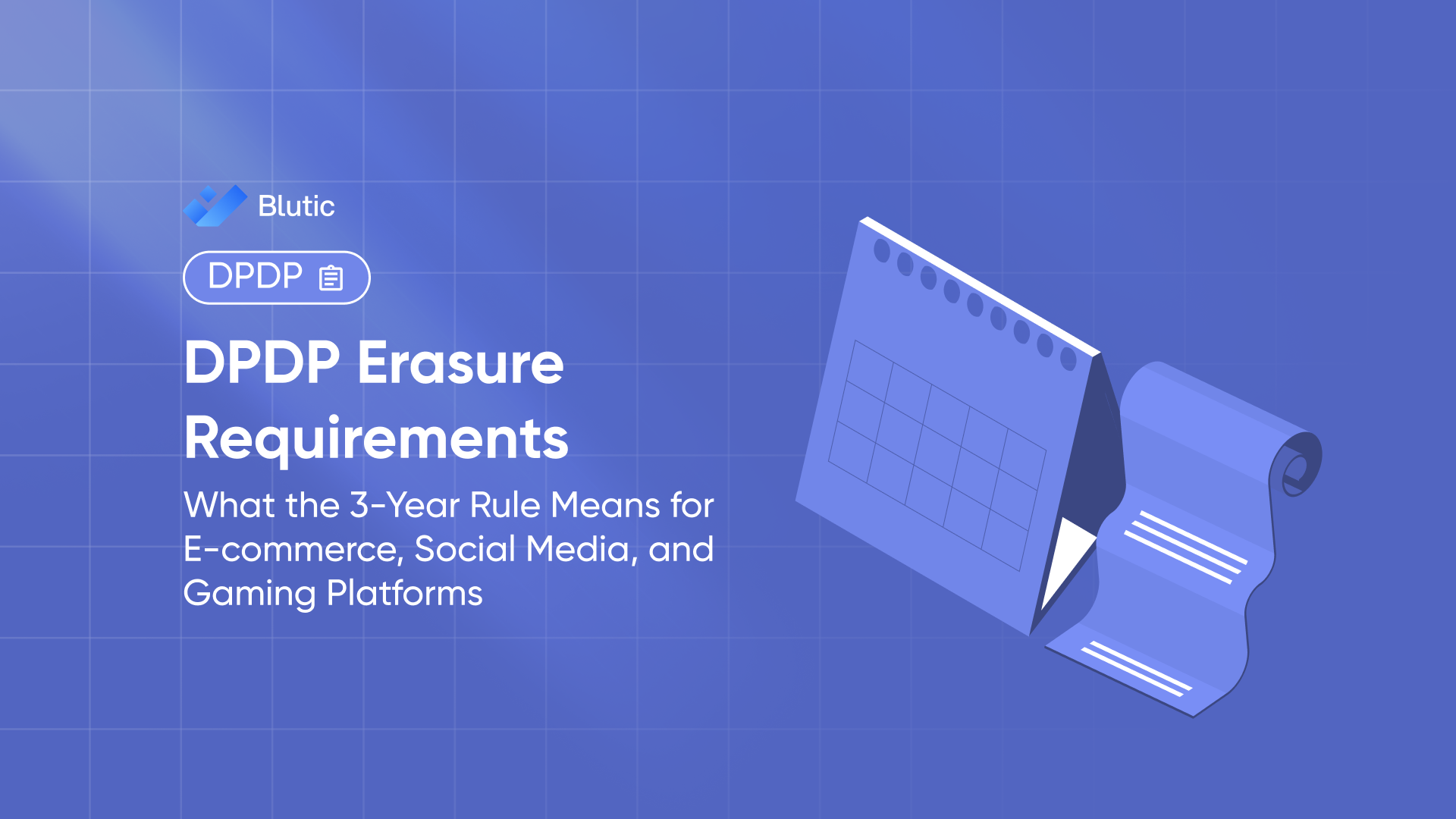Essential vs Non-Essential Cookies: Where Businesses Go Wrong

Essential vs Non-Essential Cookies: Where Businesses Go Wrong
Introduction
Not all cookies are created equally. Yet most Indian websites treat them the same lumping analytics, advertising, and essential cookies under one generic pop-up with an “Accept All” button.
Under the Digital Personal Data Protection Act (DPDPA), this is not only a compliance risk, it’s also a trust breaker.
In this blog, we’ll break down the key differences between essential and non-essential cookies, how businesses often misclassify or mishandle them, and what you can do to fix it.
What Are Essential Cookies?
Essential cookies are strictly necessary for a website’s basic functions. These may include:
- User session management (e.g., login, shopping cart)
- Security and fraud prevention
- Language or accessibility preferences
- Site navigation
These cookies do not require user consent, as they are fundamental to providing the service requested by the user.
What Are Non-Essential Cookies?
Non-essential cookies are any cookies that are not required to run the core functions of the website. These typically include:
- Analytics cookies (Google Analytics, Hotjar)
- Marketing and advertising cookies (Meta Pixel, programmatic trackers)
- Personalization cookies (recommendation engines, UI preferences)
- Social media integrations (like/share buttons with tracking)
These cookies must be blocked by default until the user gives informed, explicit consent.
Where Businesses Go Wrong
1. Lumping All Cookies Together
Many websites label all cookies as “functional” or “for your experience,” without separating essential from non-essential ones.
Why it’s a problem:
This violates DPDP consent rules and can mislead users into thinking they must accept tracking to use the site
2. Auto-Loading Trackers Before Consent
Scripts like Google Analytics or Meta Pixel often fire the moment a page loads regardless of whether the user has accepted cookies.
Why it’s a problem:
Under the DPDP Act, this is processing personal data without consent and could lead to regulatory penalties.
3. Missing Opt-Out Options
Some businesses show a banner but offer no clear “Decline” or “Manage Preferences” button.
Why it’s a problem:
Consent must be freely given. If users can’t opt out or only have the option to “Accept All,” it’s not valid consent.
4. Using Pre-Ticked Toggles
Websites that display toggle categories but default them all to “on” are violating DPDP principles of active and specific consent.
Why it’s a problem:
Pre-selected consent is not consent. Users must opt in not opting out after the fact.
5. Not Storing Consent Logs
Even if consent is correctly implemented, many businesses fail to maintain logs of who gave what consent and when.
Why it’s a problem:
In case of an audit or user complaint, you’ll need proof and memory doesn’t count.
What You Should Do Instead
- Clearly categorize cookies (Essential vs Analytics vs Marketing)
- Block all non-essential cookies by default
- Offer a “Manage Preferences” option alongside “Accept”
- Store timestamped logs of consent and changes
- Let users modify or withdraw consent anytime
How Blutic Helps You Do It Right
Blutic is a smart cookie consent and compliance platform designed for Indian websites and apps. With Blutic, you can:
- Segment cookies and show users what’s essential vs not
- Block marketing and analytics cookies until consent is given
- Log and export all consent records
- Customise banners in multiple languages
- Integrate with Shopify, WordPress, WooCommerce, GTM, and more
Most importantly, you stay compliant without sacrificing UX or speed.
Getting cookie consent wrong isn’t just about technical setup; it’s about trust. When users feel tricked or tracked without permission, they bounce. And when regulators investigate, it's the basics of cookie handling that often trigger violations.
By respecting the line between essential and non-essential, your business can show it takes both privacy and professionalism seriously.
Frequently Asked Questions
No. You must block non-essential cookies unless the user has clearly agreed to them.
No. They are allowed by default because they’re needed for core site functions but you must still explain their purpose in your cookie policy.
More Blogs
Get the indise scoop: the latest tips, tricks, & product updates
%20.png)




